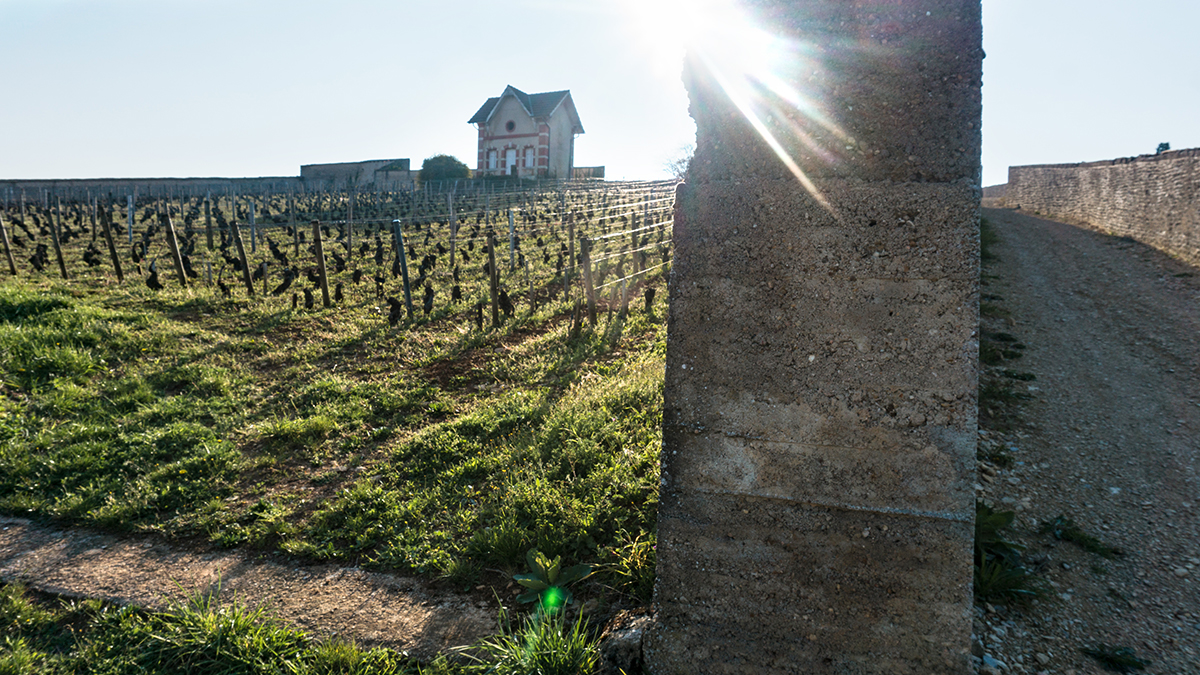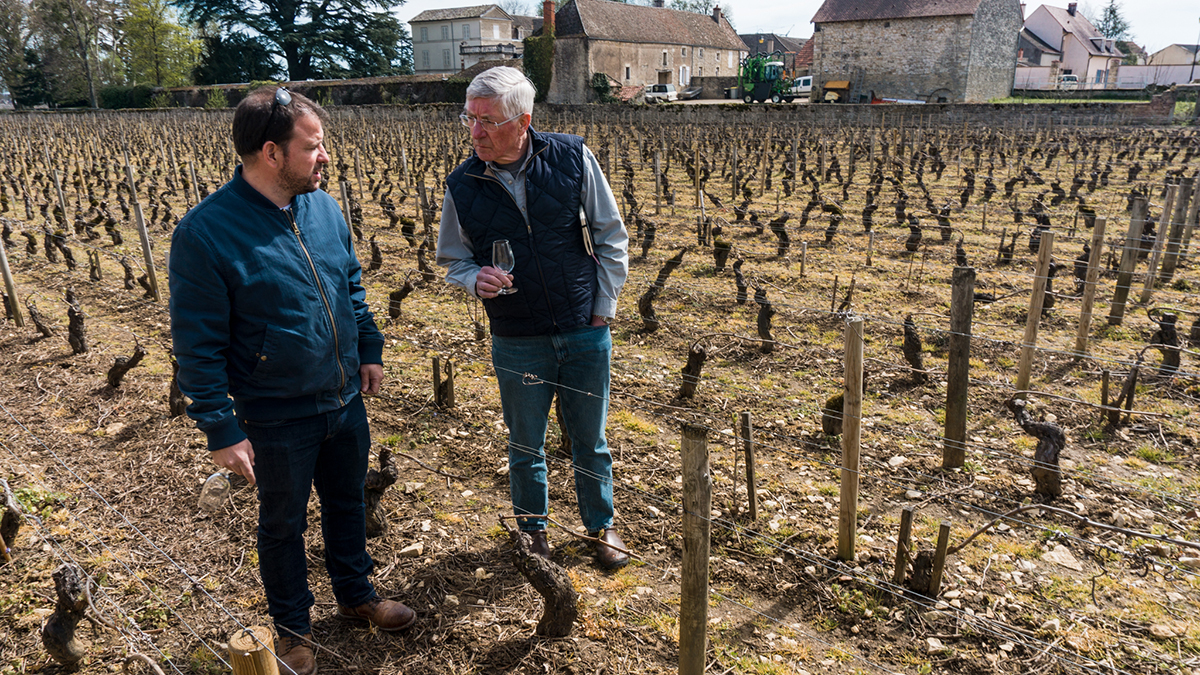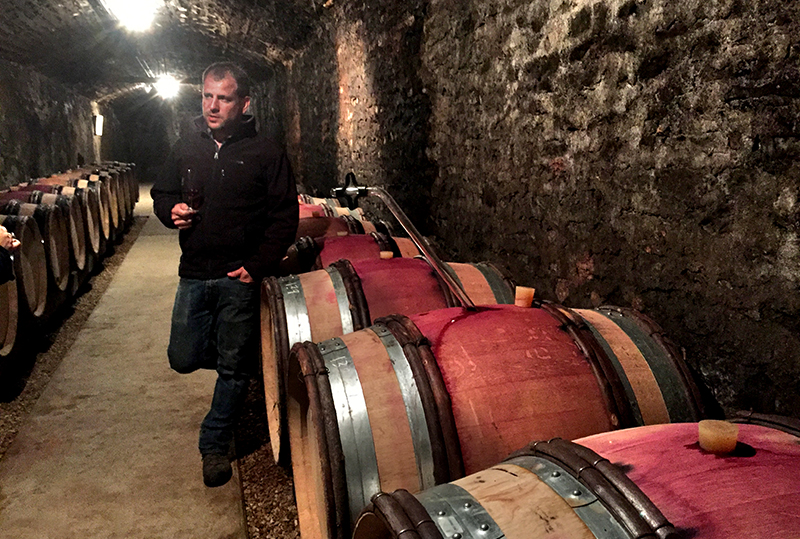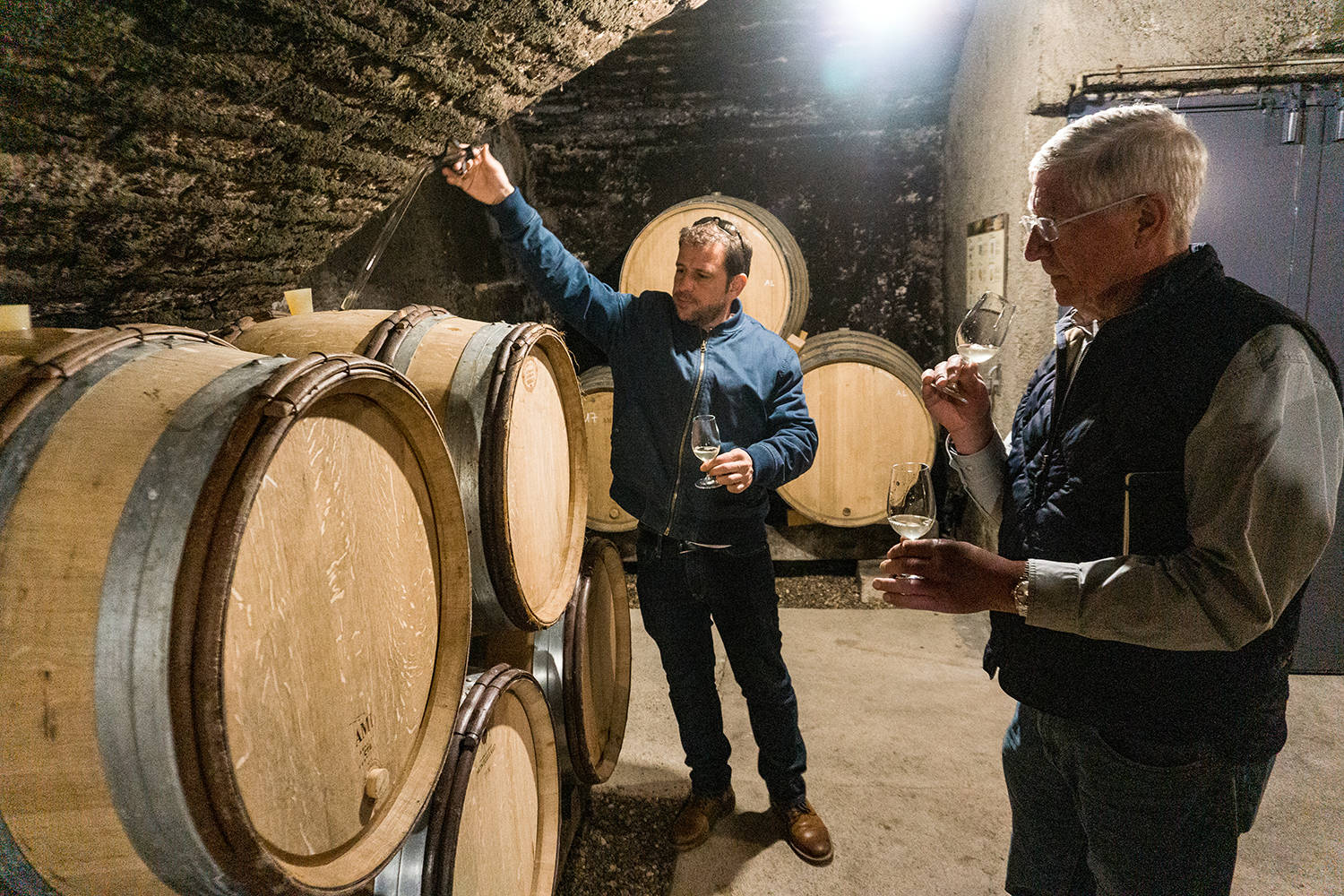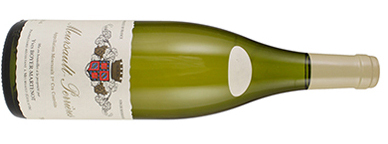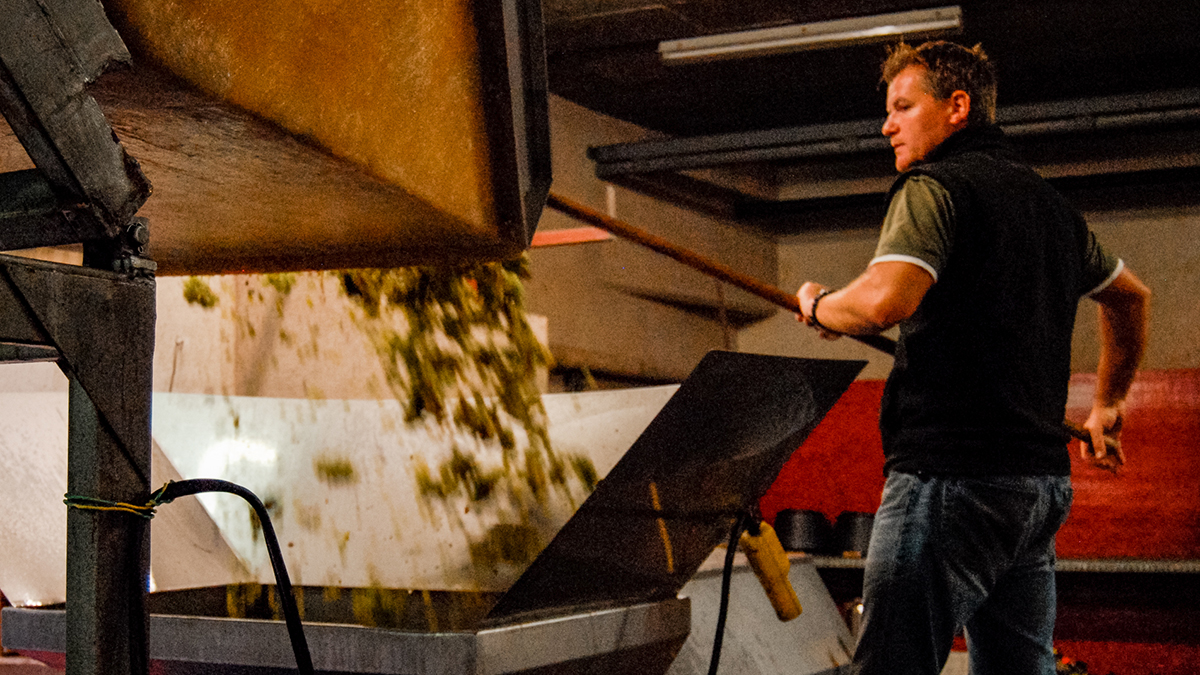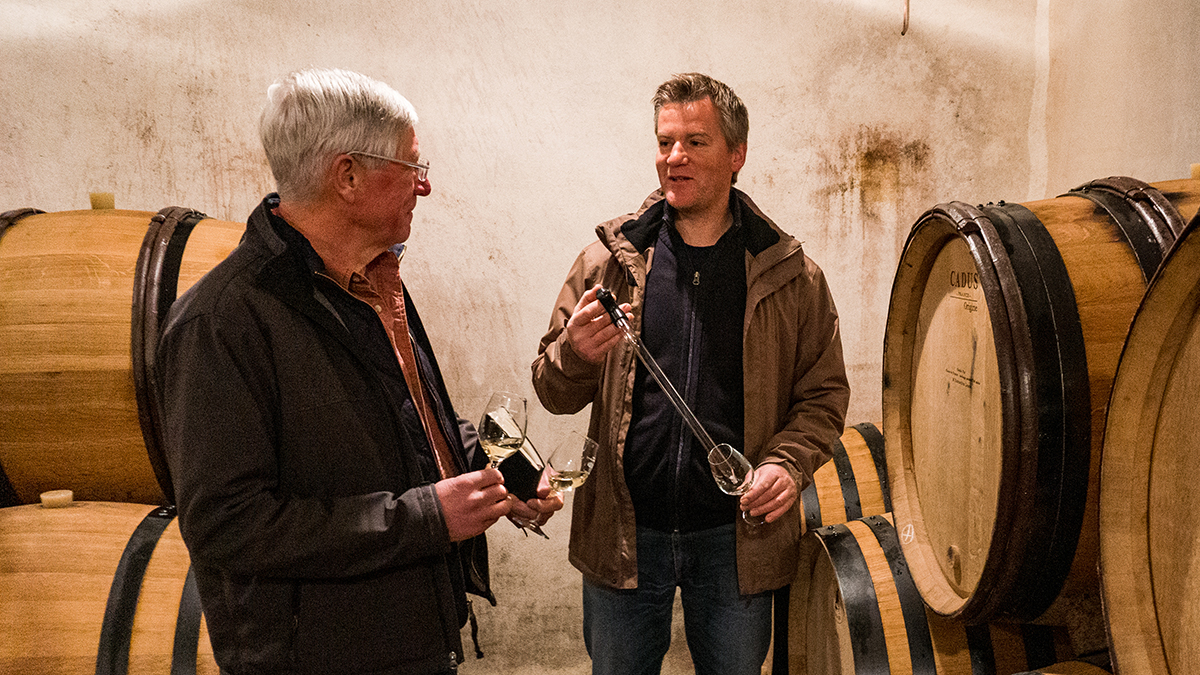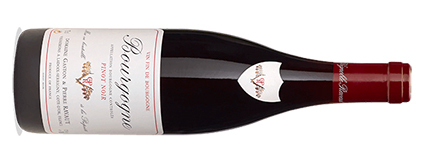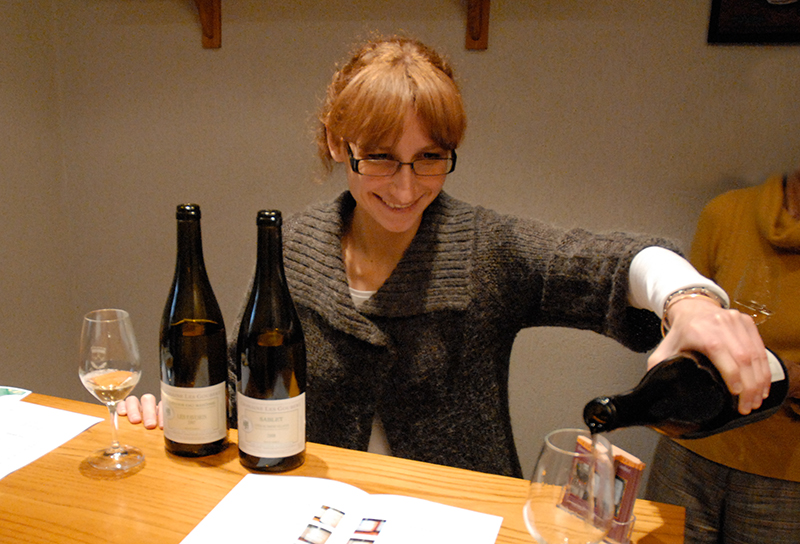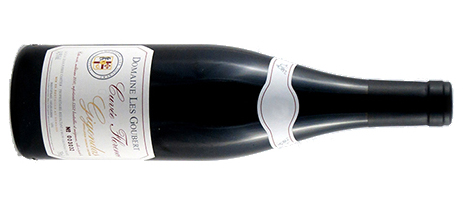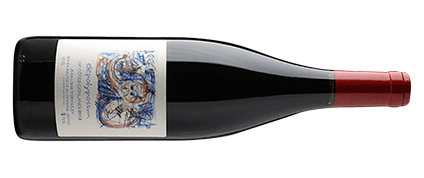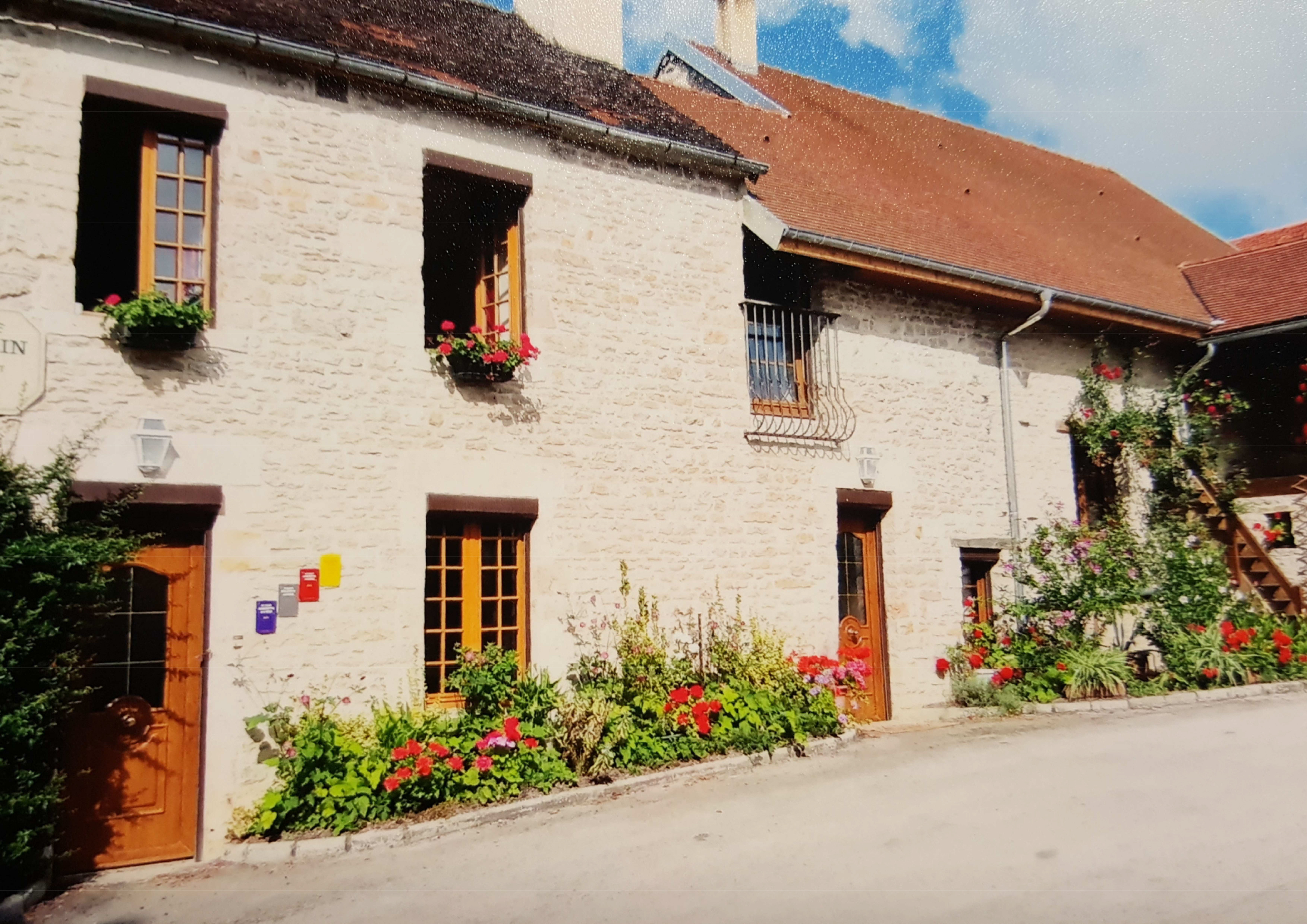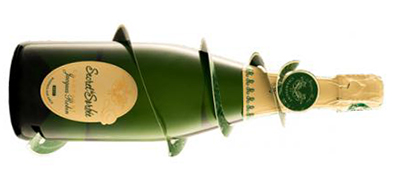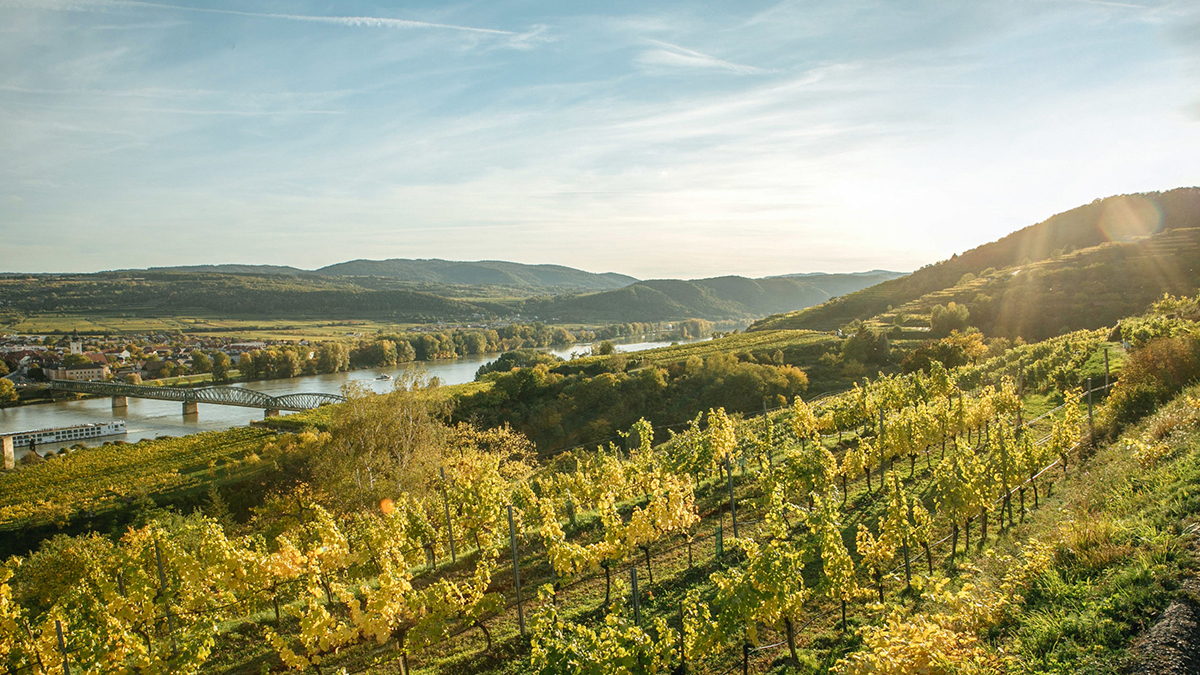Michel Gros is among the most recognizable producers in our portfolio. With over forty vintages under his belt at the helm of a famous domaine, Gros is a winemaker with almost unrivaled experience.Through four decades of rapid change – in globalized demand, in viticulture, and in climate – Michel has steered the domaine with careful and steady hand. If his wines are more precisely engineered than current Burgundian fashion, the results are proof of just how skillful a winemaker he is.
Consistency has been a hallmark of the Gros domaine for far longer than Michel’s tenure. The 2019 vintage marks the 160th anniversary of the Gros family’s purchase of its flagship monopole, the Clos des Réas – the only premier cru monopole remaining in the famous terroir of Vosne Romanée. Ten years ago, in honor of the vineyard’s 150th anniversary and in the outstanding 2009 vintage, the domaine reissued their 1867 label, which features the gold medal the wine won at the Paris World’s Fair. This year, with another decade and another superb vintage to celebrate, they’re reviving the label. (See below.)
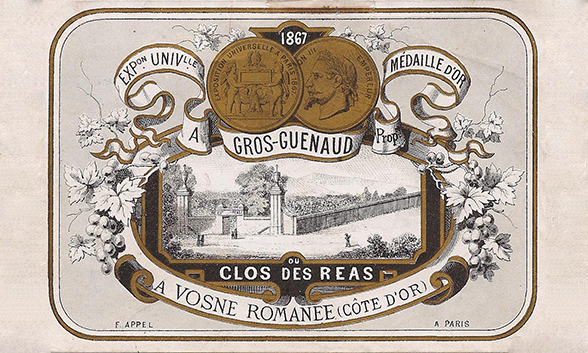
And as Michel has begun to turn the reins over to his son Pierre, we’ve been thrilled to see this multigenerational tradition of quality continue. The 2019 vintage at Michel Gros is dazzling and delicious. Like much else in 2019, the reds show exceptional concentration. A cool spring delayed flowering to mid-June (once considered normal) and after a warm, dry summer, the domaine harvested perfectly clean fruit under sunny mid-September conditions. Gros’s 2019s are simply beautiful, and a vintage we expect to repay extended aging, particularly among the top wines. But, as usual, the consistency of excellence here extends from Bourgogne to Clos Vougeot Grand Cru.
Gros’s Bourgogne Côte d’Or rouge is always delicious, and 2019 is as good as ever. The wine shows both utterly pleasant youthful fruit and masterfully crafted underlying structure. The tannins are smooth and unobtrusive, but provide a perfect armature on which to display the fruit. Look for notes of red berries, earth, and chalk in the nose, with a clean, refreshing finish. Burghound called the 2019 “fresh and bright,” “vibrant and well-detailed.” As always this requires no patience and should be delicious this fall. But we anticipate this vintage in particular will also cellar nicely over a few years . At under $25/bot with Futures pricing, this is an astonishing value.

We have two suggestions from the Hautes-Côtes de Nuits. These vines lie about twenty minutes west of Vosne-Romanée, in hills with higher elevation and breezier air. In recent warm vintages their location has put them in prime spot to achieve balance and freshness – both 2019s succeed in this with ease. Burghound said “be sure to check out the very good range of Bourgogne offerings,” and named both wines “Top Values” and “Outstanding.” The Hautes-Côtes “Au Vallon” is from a sunny plot with 30 year old vines. The 2019 is beautifully floral, with bright red fruits alongside notes of stones, wild strawberries, and wildflower honey. The mouth is smooth and delicious; Burghound found “beguiling intensity,” predicting it will repay up to 5 years of cellaring.
Gros’s other Hautes-Côtes cuvée is the Fontaine-St-Martin, a large 7 hectare plot split between white and red. This is always a step above the rest of Gros’s regional wines, and in 2019 the distinction holds true. The nose shows perfume, toast, red berries, and minerals, with a precision and tension that reminded us of a village Morey-St-Denis. Burghound found “excellent volume,” and called it “big and rather serious wine.” We agree, and think this overperforms its appellation by a mile. Both Hautes-Côtes wines offer real value, and both will reward some time in the cellar. The Bourgogne Côte d’Or should drink well from the start, Au Vallon from next summer; and the Fontaine-St-Martin we’d consider putting aside for a year or two before dipping in. But however much of these you purchase, you’ll eventually wish you had more.

Gros offers a growing handful of wines at the village level, each delicious and true to its terroir. Beginning in the south of the Côte de Nuits, there are two cuvées from Nuits-St-Georges. The appellation spans four miles end to end, making it enormous by Burgundy standards, and as you might expect spans a wide range of terroirs. Gros’s first cuvée comes from the northernmost sector, near the border with Vosne-Romanée. The blend of four plots here always shows finesse and subtlety borrowed from its famous northern neighbor. The Nuits-St-Georges 2019 is a lovely blend of rustic and floral, with a classic Burgundian nose of blackberries, toast and spice. This is concentrated and sleek, with a sturdy young texture that should help it age for years. It will never be bold, but it’s likely to be beautiful. The second Nuits cuvée comes from the center of the appellation, in the “Chaliots” vineyard. The nose is a bit darker and woodsier, and the tannins a beat more rustic and masculine. In both cases the oak is handled beautifully, supporting the fruit without getting in the way. Both cuvées offer excellent value for ageworthy village cuvées from the Côte de Nuits.
In Morey-St-Denis, Gros’s vines are in a village plot that’s about as well located as they come. Perched above the famous Grand Cru Clos de Tart, Michel’s vines in “En la Rue de Vergy” are just coming of age, and seem to produce better wine each year. There’s more than village-level intensity here, and a smooth texture and serious concentration. The nose shows roses and stones, with plum fruit and cassis. The mouth is softer and less rustic than the Nuits cuvées, and finishes longer and fuller. This is Morey precision in a muscular package – Burghound found “unusually good volume and richness,” calling it “already quite pretty.”

The final two Gros village levels are a jump in price, but both easily earn it. Most of the cuvée from Chambolle-Musigny is from “Les Argillieres,” an excellent village plot located just upslope from the Grand Cru Le Musigny. In 2019 the concentration is really impressive, with a very long, very refined finish. More than the other cuvées this will require time to settle into itself, and would make a candidate for a decade or more of aging. In Vosne-Romanée, Michel’s hometown, the village level cuvée is terrific as always in 2019. The nose shows sweet perfume, with very fine tannins packed into a sturdy, concentrated core. Lovely, ethereal notes of perfume and smoke join cassis, violets, and plums. Burghound called it “Outstanding,” finding it “rich, velvety, and seductive… succulent and sappy.” He concluded simply, “this is lovely, and very Vosne.” This too will require (and amply reward) patience.
At the premier cru level, Gros’s two always-stellar cuvées do not disappoint. Gros’s vines in “Aux Brûlées” abut the iconic Richebourg vineyard, and the wine they produce reflects that hallowed address. The nose shows violets, dried rose petals, blueberry fruit, toast and blackberry. The mouth is dense, concentrated, silky, and impossibly long – at once muscled and subtle. Cellaring will be needed to achieve its full potential, but we see this as enjoyable wine in a few years as well.
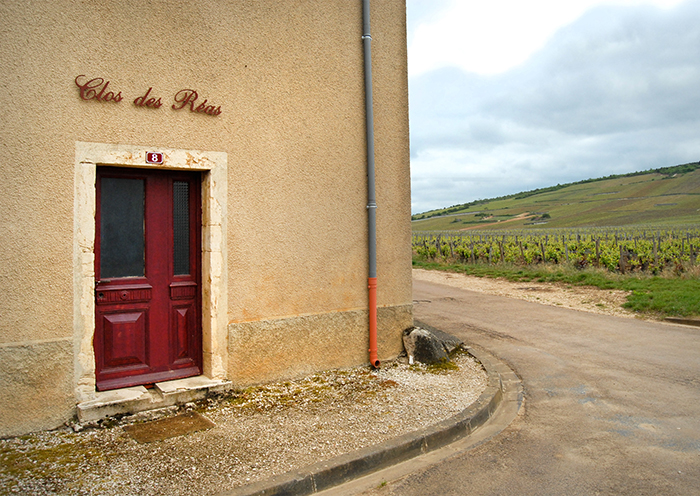
Gros’s flagship cuvée, the monopole Clos des Réas, rises to the occasion of its anniversary. (Indeed the only work involved in tasting this sample was the effort it took to spit it out.) The nose is Vosne personified – a perfumed blend of spice, violets, earth, woods and black fruits. The mouth is supple and vibrant, full of rippling tension and startling concentration. We’re not sure what the Gold Medal winning 1867 vintage of this tasted like, but it’s hard to believe it was better than this. The new Wilcox family generation sadly missed 2019 as a birth year, but we’ll be collecting a few cases of this in the cellar anyway. A special wine, from a special plot, in a truly special year.
Finally, Clos Vougeot. Gros’s tiny plot here (he’s the smallest of the Grand Cru’s 82+ owners) produced a whopping two barrels of wine in 2019, of which we’re offered a tiny fraction. As usual this is a long distance runner, and one that won’t realize its potential for another few administrations. But if past performance is any guide (and chez Gros it reliably is), this will be a truly impressive wine in time. Burghound found it “suave, round and delicious” with a “build-to-age” finish. (Quantities extremely limited, quarter case orders accepted.)
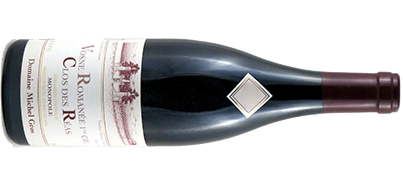
Gros’s postscript is his only white wine, a delicious pure Chardonnay from the “Fontaine-St-Martin” plot in the Hautes-Côtes. In 2019, the wine is packed with dry yellow fruit, with delicate minerality amid a faint background freshness. The soil composition of this plot is very similar to Corton-Charlemagne, about 10 miles away in the Côte d’Or — and indeed the soft white flowers for which the famous Grand Cru is known are present in this cuvée too. Exotic fruits and apricot dominate the palate, with restrained notes of oak. This is lovely, unusually aromatic white Burgundy that requires no patience.
GROS
(case prices)
Bourgogne rouge 2019: $295
HCDN Au Vallon 2019: $350
HCDN Fontaine-St-Martin 2019: $375
Nuits-St-Georges 2019: $659
Nuits-St-Georges “Chaliots” 2019: $695
Morey-St-Denis 2019: $695
Chambolle-Musigny 2019: $895
Vosne-Romanée 2019: $895
Vosne-Romanée 1er “Aux Brûlées” 2019: $1395
Vosne-Romanée 1er “Clos des Réas” 2019: $1495
Clos Vougeot Grand Cru 2019: $2,095
HCDN Fontaine-St-Martin blanc 2019: $350
